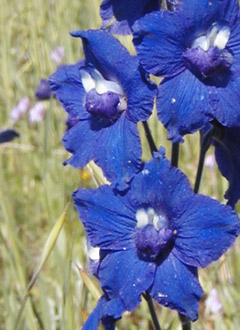Herbarium Links
General Information
What is an herbarium?
https://en.wikipedia.org/wiki/Herbarium
Here is a nice write-up at Wikipedia.
What are herbarium specimens?
https://ucjeps.berkeley.edu/dead_plants.html
A nice write-up at the University and Jepson Herbaria website.
Index Herbariorum
http://sweetgum.nybg.org/science/ih/
"A worldwide index of 3,100 herbaria and 12,000 associated staff where a total of 390 million botanical specimens are permanently housed."
Major California Herbaria
University and Jepson Herbaria, UC Berkeley (UC/JEPS)
ucjeps.berkeley.edu/
"The University and Jepson Herbaria of the University of California at Berkeley are two collections of pressed plants housed together along with research labs, libraries, and archives. Together the Herbaria hold about 2,200,000 specimens, one of the largest collections in North America. The University Herbarium, established in 1895, holds botanical collections from around the world. The Jepson Herbarium, established in 1950, specializes in the vascular plants of California."
California Academy of Sciences Herbarium (CAS)
www.calacademy.org/scientists/botany-collections
"The herbarium of the California Academy of Sciences is the largest collection of vascular plants in the western U.S. It is the sixth largest collection in the United States. Together with the Herbarium of the University of California at Berkeley (UC) the San Francisco Bay area is regarded as a National Resource Center for systematic botany. These two major collections have an informal agreement to avoid duplication, thus providing botanists with a rich and varied resource for research. The Academy collection includes approximately 2 million plant specimens. More than 95% of the specimens are vascular seed plants; the remainder are ferns and a growing collection of bryophytes. There are almost 12,000 types (holotypes, isotypes, syntypes, lectotypes, and neotypes) housed separately from the general collection."
UC Davis Herbarium (DAV)
herbarium.ucdavis.edu/
"The UC Davis Center for Plant Diversity has ca. 300,000 specimens. The collections are worldwide in scope, with strengths in the following geographic regions: California; Ecuador; Baja California; the Antilles; the Pacific Islands; Mediterranean-climate regions. The following specialty areas are strong: range plants of California; vernal pool plants of California; alpine flora of western North America; poisonous and weedy plants of California; Euphorbiaceae; Poaceae; and the genera Quercus, Allium, Arctostaphylos, Atriplex, Capsicum, Clarkia, Eschscholzia, Lycianthes, Lycopersicon, Mimulus, Navarretia, Stephanomeria, Trifolium, Vitis."
California Botanic Garden Herbarium (RSA/POM - formerly Rancho Santa Ana Botanic Garden Herbarium)
www.calbg.org/collections/herbarium
"The Herbarium is recognized throughout the world for its strength in documenting the diversity, distribution, variation, and ecology of more than 6500 California native plant species.
The combined Herbarium of Rancho Santa Ana Botanic Garden and Pomona College (RSA-POM) is a museum-quality collection of vascular plant specimens. With current holdings totaling over 1,200,000 specimens, the Herbarium is the tenth largest in the United States and third largest in California."
Major Botanical Organizations
California
California Botanical Societycalbotsoc.org
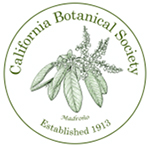 The California Botanical Society is the hub of California botany, with their journal, Madroño, being the essential go-to publication for scientific information about the California (and western) flora and vegetation. "The California Botanical Society was founded by Willis Linn Jepson in 1913 and serves a major role in advancing Western American botany with its five primary program services: Scientific Publications, Annual Banquet, Research Support, Graduate Student Support, and Community Outreach."
The California Botanical Society is the hub of California botany, with their journal, Madroño, being the essential go-to publication for scientific information about the California (and western) flora and vegetation. "The California Botanical Society was founded by Willis Linn Jepson in 1913 and serves a major role in advancing Western American botany with its five primary program services: Scientific Publications, Annual Banquet, Research Support, Graduate Student Support, and Community Outreach." Northern California Botanists
www.norcalbotanists.org
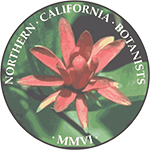 "Northern California Botanists is an organization with the purpose of increasing knowledge and communication among agency, consulting, academic, and other botanists about botanical issues concerning science, conservation, education, and professional development. Our primary objectives are to establish a communication forum via occasional meetings, a scholarship fund for students working on botanical problems in northern California, a job forum, and symposia that focus on the botany of northern California."
Southern California Botanists
"Northern California Botanists is an organization with the purpose of increasing knowledge and communication among agency, consulting, academic, and other botanists about botanical issues concerning science, conservation, education, and professional development. Our primary objectives are to establish a communication forum via occasional meetings, a scholarship fund for students working on botanical problems in northern California, a job forum, and symposia that focus on the botany of northern California."
Southern California Botanistswww.socalbot.org
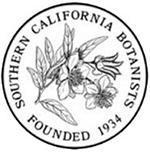 "The Southern California Botanists is an organization of individuals devoted to the study, preservation, and conservation of the native plants and plant communities of Southern California. The journal Crossosoma, published twice a year, carries articles of interest to amateur and professional botanists. The newsletter, Leaflets of the Southern California Botanists, published bimonthly, contains notices of field trips , symposia, and other events of interest. Southern California Botanists is a nonprofit organization."
California Native Plant Society (CNPS)
"The Southern California Botanists is an organization of individuals devoted to the study, preservation, and conservation of the native plants and plant communities of Southern California. The journal Crossosoma, published twice a year, carries articles of interest to amateur and professional botanists. The newsletter, Leaflets of the Southern California Botanists, published bimonthly, contains notices of field trips , symposia, and other events of interest. Southern California Botanists is a nonprofit organization."
California Native Plant Society (CNPS)www.cnps.org
 "Since its beginnings, the California Native Plant Society has been a leading voice in plant science and native plant appreciation, making it one of the foremost native plant organizations in the world. We are a 501(c) 3 non-profit dedicated to conserving California native plants and their natural habitats, while increasing the understanding, enjoyment, and horticultural use of native plants. We work closely with decision-makers, scientists, and local planners to advocate for well-informed and environmental friendly policies, regulations, and land management practices. See our Mission and Vision statement."
Calflora
"Since its beginnings, the California Native Plant Society has been a leading voice in plant science and native plant appreciation, making it one of the foremost native plant organizations in the world. We are a 501(c) 3 non-profit dedicated to conserving California native plants and their natural habitats, while increasing the understanding, enjoyment, and horticultural use of native plants. We work closely with decision-makers, scientists, and local planners to advocate for well-informed and environmental friendly policies, regulations, and land management practices. See our Mission and Vision statement."
Calflorawww.calflora.org
 "The Calflora Database is a nonprofit organization dedicated to providing information about California plant biodiversity for use in Education, Research and Conservation. Calflora is structured as a digital library to fulfill the following objectives: 1. to serve as a repository for information on California wild plants in electronic formats from diverse sources, including public agencies, academic institutions, private organizations, and individuals; 2. to provide this information in readily usable electronic formats for scientific, conservation, and educational purposes; 3. to serve public information needs related to scientific study, land management, environmental analysis, education, and appreciation of California plant life. Calflora relies on contributors for the information it provides; the website reflects the work of many individuals and institutions."
"The Calflora Database is a nonprofit organization dedicated to providing information about California plant biodiversity for use in Education, Research and Conservation. Calflora is structured as a digital library to fulfill the following objectives: 1. to serve as a repository for information on California wild plants in electronic formats from diverse sources, including public agencies, academic institutions, private organizations, and individuals; 2. to provide this information in readily usable electronic formats for scientific, conservation, and educational purposes; 3. to serve public information needs related to scientific study, land management, environmental analysis, education, and appreciation of California plant life. Calflora relies on contributors for the information it provides; the website reflects the work of many individuals and institutions."
National
Society of Herbarium Curators (SHC)www.herbariumcurators.org
 "The Society of Herbarium Curators unites the world's herbarium professionals in discussion, training, action, and support for the benefit of herbaria, science, and society. SHC envisions a network of innovative, well-trained herbarium professionals, empowered to recognize and address local and global stakeholder needs with organizationally sustainable strategies that advance the well-being of herbaria, science, and society."
American Society of Plant Taxonomists (ASPT)
"The Society of Herbarium Curators unites the world's herbarium professionals in discussion, training, action, and support for the benefit of herbaria, science, and society. SHC envisions a network of innovative, well-trained herbarium professionals, empowered to recognize and address local and global stakeholder needs with organizationally sustainable strategies that advance the well-being of herbaria, science, and society."
American Society of Plant Taxonomists (ASPT)www.aspt.net
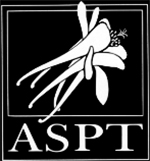 "Organized in 1936 to foster, encourage, and promote education and research in the field of plant taxonomy, to include those areas and fields of study that contribute to and bear upon taxonomy and herbaria." ASPT publishes the quarterly journal Systematic Botany. Their web site includes their quarterly newsletter and their membership directory.
Botanical Society of America (BSA)
"Organized in 1936 to foster, encourage, and promote education and research in the field of plant taxonomy, to include those areas and fields of study that contribute to and bear upon taxonomy and herbaria." ASPT publishes the quarterly journal Systematic Botany. Their web site includes their quarterly newsletter and their membership directory.
Botanical Society of America (BSA)botany.org
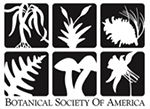 "The BSA is the professional home for botanists and plant scientists. We support the breadth and diversity of botanical research and education. Our main area of expertise is in supporting professional botanists and their students, and we also encourage K-12 teachers, community college educators, affiliated professionals and amateurs as members who can benefit from what we have to offer. We are a leading Society dedicated to BOTANY and its FUTURE. Our Mission: To promote botany, the field of basic science dealing with the study and inquiry into the form, function, development, diversity, reproduction, evolution, and uses of plants and their interactions within the biosphere." BSA publishes the journal American Journal of Botany, and their newsletter is available on their web site.
"The BSA is the professional home for botanists and plant scientists. We support the breadth and diversity of botanical research and education. Our main area of expertise is in supporting professional botanists and their students, and we also encourage K-12 teachers, community college educators, affiliated professionals and amateurs as members who can benefit from what we have to offer. We are a leading Society dedicated to BOTANY and its FUTURE. Our Mission: To promote botany, the field of basic science dealing with the study and inquiry into the form, function, development, diversity, reproduction, evolution, and uses of plants and their interactions within the biosphere." BSA publishes the journal American Journal of Botany, and their newsletter is available on their web site.
